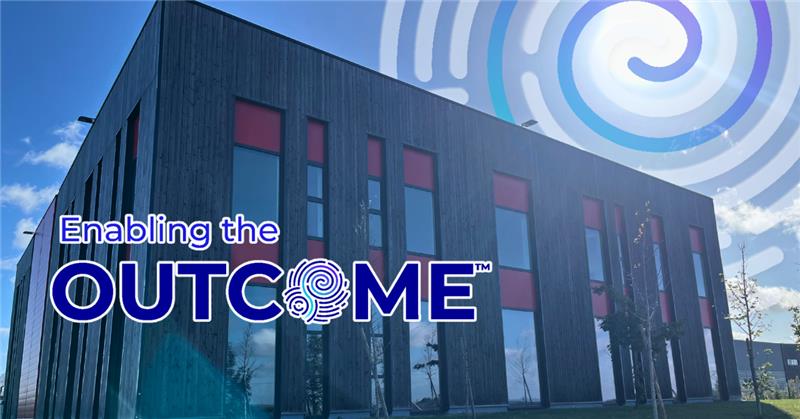How Global Shifts are Reshaping ATMP Logistics Beyond Borders
As advanced therapy medicinal products (ATMPs) continue to gain traction globally, the logistics required to move these therapies across borders are facing unprecedented challenges. From shifting trade policies to regional conflicts and Brexit legacy issues, global events are reshaping how therapies are distributed… and how supply chains must adapt in real time.
In her recent interview with Beyond Biotech, Alison Pritchard, Vice President of Business Development for Cryoport Systems in EMEA, offered a candid look at how geopolitical dynamics are influencing ATMP logistics and what developers must do to stay ahead.
“It’s a time of uncertainty, but I think we can also say it’s a time of opportunity,” Alison said. “Shifts in trade policies and international relations are introducing new complexity into global operations, particularly around sourcing critical materials and managing cross-border logistics.”
Customs Scrutiny and Documentation Burdens are Rising
Therapeutic developers in EMEA are feeling the direct impact of more stringent customs requirements. With changing tariffs, evolving trade restrictions, and even legacy issues from Brexit still unfolding, documentation requirements are potentially becoming more complicated.
“There’s the potential for increased scrutiny at customs,” Alison explained. “It can mean more documentation requirements, and in some cases, delays. Right now, this can change on a week-by-week basis. But again, I don’t necessarily think that this is something to be concerned about in the supply chain space. I think, providing you have a mechanism to understand the impact of these events, it means that you can be somewhat flexible.”
Experienced partners can help developers mitigate these risks through robust, validated documentation protocols and local regulatory insights. Cryoport Systems’ trade and compliance teams actively monitor these developments and design appropriate measures to mitigate risk. Therapy developers need to be prepared to pivot quickly and build flexibility into their logistics strategies. Working with a proven partner like Cryoport Systems helps anticipate bottlenecks and preserve both product integrity and trial momentum, something nearly impossible to replicate internally without significant investment.
Brexit, Tariffs, and Regional Instability Create a Complex Landscape
Even years after Brexit, developers in Europe continue to navigate a patchwork of differing requirements and regulatory standards between the UK and EU. Add to that emerging trade disputes, changing tariffs, and regional conflicts, and the result is a fragmented and changing trade environment in which the challenge of cross-border ATMP logistics becomes even more acute.
“We’re seeing conflict, trade restrictions, tariffs, and Brexit legacy issues all contributing to a more fragmented and complex landscape,” Alison remarked. “Companies can’t rely on a single supply chain model across the region, they need tailored, country-specific approaches.”
One Cryoport Systems client recently faced this challenge head-on. Despite securing reimbursement and licensing in one EU member state, they had to repeat the entire process country by country, duplicating efforts and managing multiple bureaucracies in parallel. “Ultimately, they were facing longer timelines to get therapies into the hands of healthcare providers and patients,” Alison noted.
This environment truly underscores the value and importance of working with logistics partners who offer deep local knowledge. Anticipating regulatory friction while offering robust shipping lane qualification and shipping risk analysis ensures that therapies move safely without running into preventable compliance missteps.
“It’s never a one size fits all approach anyway,” Alison said. “I think it’s important to recognize that there are multiple ways that you can support cross-border logistics. And sometimes you just have to pivot quickly with that.”
Compliance and Trade Monitoring Teams Take Center Stage
In this environment, the role of compliance and trade monitoring teams has never been more critical. In EMEA, where regulations vary by country and evolve frequently, these teams have quickly become enablers helping developers navigate regulatory fragmentation and avoid costly delays.
“This is an ever-evolving landscape,” Alison pointed out. “Our trade and compliance team is closely monitoring it and designing countermeasures.”
Cryoport Systems works closely with therapy developers to design supply chain strategies that account for local Qualified Person (QP) release, importer of record requirements, and port-specific clearance processes. These strategies are built to ensure compliance while maintaining efficiency.
“Even the most meticulously planned supply chain can be vulnerable to disruption,” Alison emphasized. “You have to build in contingency plans and communication. The most rigid workflows can be the most brittle when stress tested.”
By aligning logistics with strategic development goals, developers can proactively mitigate risks and maintain full supply chain visibility.
Infrastructure and Partnerships Build Resilience for the Future
To meet these challenges, Cryoport Systems is doubling down on infrastructure and partnerships. A new Global Supply Chain Center that recently launched in Louvres, France (just outside of Paris), for example, will serve as an additional central hub for logistics, GMP-compliant biostorage, secondary packaging, and QP oversight as the facility’s offerings expand.
“Paris is a strategic location in the heart of Europe,” Alison said. “It enhances our ability to deliver reliable and scalable supply chain solutions and introduces greater value and efficiency to our clients.”
Partnerships are also key. Cryoport Systems collaborates with CROs, CDMOs, and industry working groups to co-design logistics strategies and eliminate friction points between manufacturing, storage, and distribution.
“The multiparty relationships become real enablers of efficiency and consistency,” Alison explained. “By collaborating closely, we can collectively troubleshoot emerging challenges and refine our supply chain solutions.”
As global dynamics continue to shift, therapy developers must embrace agility and invest in strategic partnerships while designing supply chains that are resilient by default. The most successful ATMP developers view supply chains as living systems that are capable of adapting quickly to evolving regulatory and geopolitical landscapes.
“The ultimate success in cell and gene therapy is only measured by one thing: how many patients benefit from it,” Alison said. “Getting there takes more than great science, it takes collaboration.”
By embedding regulatory foresight, contingency planning, and end-to-end visibility into logistics, developers can shift a historically reactive function into a proactive advantage. Cryoport Systems is helping developers build supply chains that reflect the complexity of the real world, with every link in the chain designed to Enable the Outcome™ for patients across the globe.
“When we truly recognize that every link in the chain enables the patient’s outcome,” Alison concluded, “we build more resilient systems, more agile networks, and more patient-centered strategies. Not just to meet today’s demand, but to scale for the future.”
You can listen to the full podcast interview with Alison Pritchard here.


